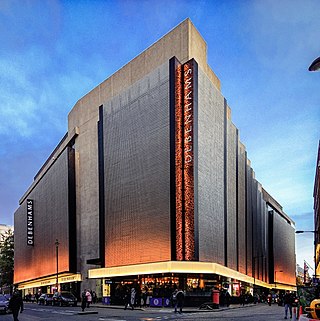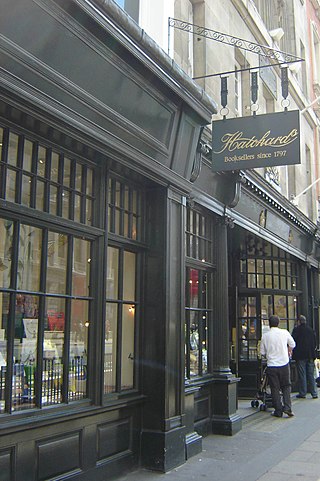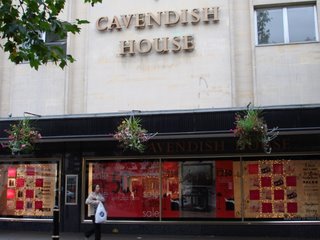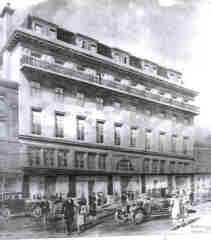
Debenhams plc was a British department store chain operating in the United Kingdom, Denmark and the Republic of Ireland. It was founded in 1778 as a single store in London and grew to 178 locations across those countries, also owning the Danish department store chain Magasin du Nord. In its final years, its headquarters were within the premises of its flagship store in Oxford Street, London. The range of goods sold included middle-to-high-end clothing, beauty, household items, and furniture.

Hatchards is an English bookshop claiming to be the oldest in the United Kingdom, founded on Piccadilly in 1797 by John Hatchard. After one move, it has been at the same location on Piccadilly next to Fortnum & Mason since 1801, and the two stores are also neighbours in St. Pancras railway station as of 2014. It has a reputation for attracting high-profile authors and holds three royal warrants granted by King Charles III, Queen Elizabeth II, and Prince Philip respectively.

Allders was an independent department store operating in the United Kingdom.

Cavendish House is Cheltenham's oldest and leading department store, located on The Promenade. Its establishment was of great significance for Cheltenham's future reputation as a leading shopping centre. Known as 'Cavendish House' from its early days, its name was officially adopted with the registration of a limited liability company in 1883. The store became part of the House of Fraser group in 1970.
Owen Owen was a Liverpool-based operator of department stores in the United Kingdom and Canada. Beginning with a drapery shop in Liverpool, a chain of department stores was built up, often by taking over rival retailers. The company remained under Owen / Norman family control until the 1980s, and the brand ceased to be used in 2007.
Sir Ernest Ridley Debenham, 1st Baronet, was an English businessman. He was responsible for the considerable expansion of the family's retail and wholesale drapery firm between 1892 and 1927.
Thomas Werner Laurie (1866–1944) was a London publisher of books that were avant-garde in some cases, racy in others.

Swan & Edgar Ltd was a department store, located at Piccadilly Circus on the western side between Piccadilly and Regent Street established in the early 19th century and closed in 1982.
United Drapery Stores, or UDS, was a British retail group that dominated the British high street from the 1950s to the early 1980s.
Clarence Charles Hatry was an English company promoter, financier, bankrupt, bookseller and publisher. The fall of the Hatry group in September 1929, which had been worth about £24 million, is cited as a contributing factor to the Wall Street Crash of 1929.

Charterhouse Bank was a British investment bank.

Henry William Montagu(e) Paulet, 16th Marquess of Winchester was an English peer, landowner, soldier, sportsman, politician and business man. He was known as Lord Henry Paulet from 1887 until 1899.
Edwin Jones was a large department store in Southampton, England founded in 1860 in East Street, Southampton with further stores established in Old Christchurch Road, Bournemouth, and Clinton Arcade, Weymouth. The business became part of the Drapery Trust, later a subsidiary of Debenhams, in 1928. The store was re-branded as Debenhams in 1973.
Bobby & Co. was a provincial department store group based mainly in seaside towns on the south coast of England. The business operated from 1887 until 1972. During the 1920s it became part of the Drapery Trust, which in turn became a subsidiary of Debenhams.
Curl Brothers were a department store based in Norwich. The store later became part of the Debenhams chain.
Buntings was a large department store in Norwich, England, that became part of the Debenhams group.
Scottish Drapery Corporation was a holding company for a group of Scottish department stores and drapers.
Selfridge Provincial Stores was a holding company of a group of department stores in the United Kingdom. The company was formed by Selfridge & Co. in 1926 and was active until 1940.

Plummer Roddis was a chain of department stores based in the South of England which was acquired by the Drapery Trust, before being absorbed by its parent company Debenhams.






